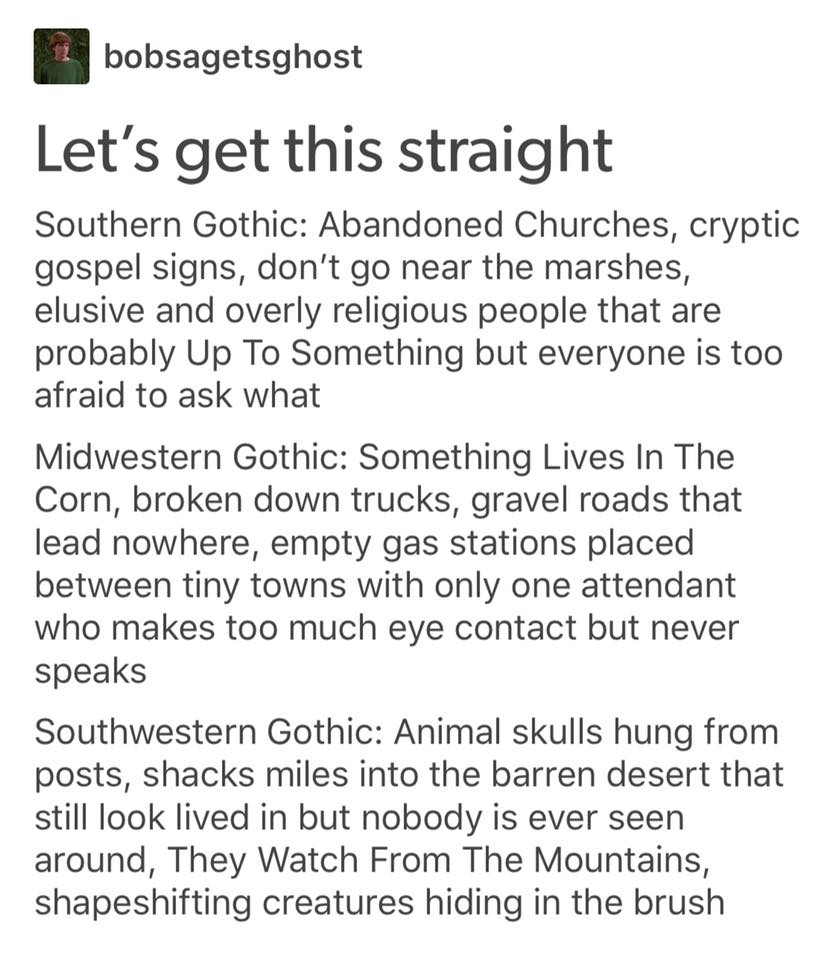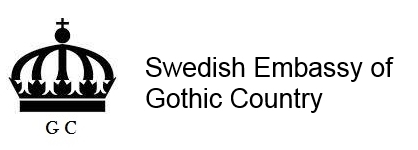 I found this typology of gothic branches on internet (see image right). It may contain a certain element of generalization and exaggaration. Most of the time typologies are helpful in understanding a complex world by making it smaller and more easy to handle. Definitions and classifications are useful tools in this process. However, some tools are not very accurate, for example so-called genre maps (algorithmically-generated, readability-adjusted scatter-plot of the musical genre-space). They simply make no sense. One of the reasons to why I started this website was to bring some order in the "gothic country" genre and provide basic consumer guidance. The term "gothic country" was first attached to The Shivers, a husband and wife duo who explored the back roads of America in their RV in the 1990s. But what is "gothic country"? One very elegant but general defintion has been suggested by writer David Goodman: "Extremely laid back style with an intense focus on the supernatural, death, sorrow, and other themes and images found in Southern/Gothic literature." Amen to that. However, there are many different branches and twigs in the gothic country genre and you can approach the genre in different ways. In a previous blog entry I described the regional differences, read more here (opens in a new window). You have to be careful. The use of definitions and classifications sometimes gets out of control. In some academic fields people are busy with, not with research, but with inventing conspicuous terms, constructing far-fetched dichotomies and building new models. No content, only surface. Unfortunately, the empirical data doesn't always fit. Not even with the help of a shoehorn in stainless steel. In fact, using definitions and classifications is a balancing act. One should not walk on a tightrope because, as we all know, tightrope-walkers are doomed to fall one day. However, I'm walking on.
I found this typology of gothic branches on internet (see image right). It may contain a certain element of generalization and exaggaration. Most of the time typologies are helpful in understanding a complex world by making it smaller and more easy to handle. Definitions and classifications are useful tools in this process. However, some tools are not very accurate, for example so-called genre maps (algorithmically-generated, readability-adjusted scatter-plot of the musical genre-space). They simply make no sense. One of the reasons to why I started this website was to bring some order in the "gothic country" genre and provide basic consumer guidance. The term "gothic country" was first attached to The Shivers, a husband and wife duo who explored the back roads of America in their RV in the 1990s. But what is "gothic country"? One very elegant but general defintion has been suggested by writer David Goodman: "Extremely laid back style with an intense focus on the supernatural, death, sorrow, and other themes and images found in Southern/Gothic literature." Amen to that. However, there are many different branches and twigs in the gothic country genre and you can approach the genre in different ways. In a previous blog entry I described the regional differences, read more here (opens in a new window). You have to be careful. The use of definitions and classifications sometimes gets out of control. In some academic fields people are busy with, not with research, but with inventing conspicuous terms, constructing far-fetched dichotomies and building new models. No content, only surface. Unfortunately, the empirical data doesn't always fit. Not even with the help of a shoehorn in stainless steel. In fact, using definitions and classifications is a balancing act. One should not walk on a tightrope because, as we all know, tightrope-walkers are doomed to fall one day. However, I'm walking on.
